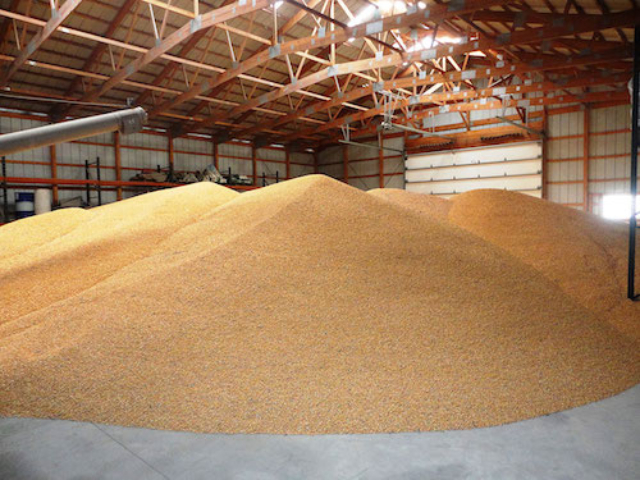Have you ever wondered what goes on around the farm throughout the year? Here’s a glimpse at the intricate processes that bring our premium sod directly to your doorstep.
Crop Production
Throughout the year, Saratoga Sod grows 600 acres of sod and 600 acres of row crops, including corn, soybeans, and barley. Why does a sod farm produce other crops? It allows for proper field rotation, replenishing the soil, breaks weed and pest cycles, and contributes to diversity. Here’s how we do it!
Field Preparation
- Soil testing: Whether for sod or row crops, it’s important to test the soil prior to planting to determine nutrient requirements for amendments, like lime and fertilizer.
- Preparing the soil: Although soil types and conditions can vary, proper soil preparation is essential to eliminate layers or hard pans, provide better air and water movement, and enhance deep rooting.
- Plow: Turns and loosens the upper layer of the soil, bringing fresh nutrients to the surface, while burying weeds and the remains of previous crops, allowing them to break down. The plow creates long trenches of fertile soil called furrows.
- Disc (row crops only): The plowed field is typically left to dry out, and then disced to break up large clumps of soil.
- Cultipacker: Cultipacking firms and smooths the seedbed before planting. For row crops, the soil is cultipacked again after planting to improve soil-to-seed contact.
- Landplane: After cultipacking, a land plane is used for leveling fields prior to planting sod. A field is usually planed in several directions to eliminate low spots. The surface must be smooth and uniform; if there are surface irregularities from poor soil preparation, the sod harvester blades will not cut the sod uniformly and yield will be reduced.
- Power Harrow: The power harrow stirs the soil to incorporate fertilizer and maintain good soil structure. It is the final soil preparation tool used prior to planting.
Planting & Seeding
Each year, we establish new sod fields in August. These fields are carefully cultivated for two years before being harvested. A seeder is used to seed turfgrass. A planter is used to plant corn and soybeans, and a grain drill is used for small grains.
Crop Maintenance
- Irrigation: We prioritize irrigation for mature sod, using portable rain reels and center pivots. Our other crops generally rely on rainfall for their water needs
- Mowing: 600 acres of sod require lots of mowing! During peak season, we mow every other day to keep the sod at an ideal height of 2.5 inches. Our fleet of rotary and reel mowers, averaging 26 feet in width, can cover about 100 acres daily. We typically recycle clippings by returning them to the sod, except in cases of excessive moisture.
Harvest & Delivery
- Sod Harvesting: All of our sod is cut to order for immediate installation. Our skilled production crew can harvest a pallet of small roll sod or big roll sod in a matter of minutes! One man and one machine can cut a tractor-trailer load of sod (10,800 sq. ft.) in less than an hour.
- Grain Operation: Our row grains are harvested for animal feed and are sold to companies for local distribution, or for export.
- Black Garden Soil & Mulch: We mix and screen black loam, peat loam, and decomposed manure to create our premium Big Yellow Bag black garden soil. We also carry black mulch for reducing weeds and retaining moisture around landscaping. Our Big Yellow Bags are filled with a heaping cubic yard of either garden soil or mulch—ready to be loaded on our trucks for delivery.
- Loading Trucks: Our delivery fleet consists of 5 tractor trailers and a straight truck. The tractor-trailers can transport up to 18 pallets of small roll sod or 30 big rolls, while the straight truck can carry 10 pallets. We also deliver sod, black garden soil, and mulch all throughout the Northeast using these trucks! To streamline the process, all our trucks are equipped with portable forklifts for ease of loading and unloading at job sites.
Off-Season
Winter at Saratoga Sod Farm is far from idle. Our shop team focuses on equipment maintenance, rebuilding, and overhauling machinery to ensure it’s ready for spring. Meanwhile, the marketing team attends tradeshows and meetings to prepare for the upcoming sales season. These off-season activities are crucial for maintaining our equipment and staying competitive in the market.
To learn more about Saratoga Sod’s rich history and the wide range of products and services we offer, check out our About page. Or, request a free quote to order premium sod today!




